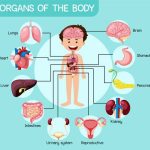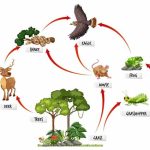A Good Classroom is more than just a space for Learning.
It’s a safe haven where children feel comfortable, amidst their daily routines.
Ironically, that’s the very reason it makes for The ‘Perfect’ Space for Learning!
It’s true, children need to have a backdrop of ‘comfort’, vis a vis understanding Concepts. Of course, for the purposes of this essay we will concern ourselves with ‘English’ Concepts.
However, do we even know what is meant by the phrase, ‘Positive Learning Environment?’
In this article, we will explore the nuances of a Positive Learning Environment, and see how it can get children to flourish, vis a vis the learning of English Concepts. If mastering the English Language is what you are looking to drive in your kids, you’ve come to the right place!
Positive Learning Environment: The Basics
Contrary to what it sounds like, there’s far more to a ‘Positive Learning Environment’, than meets the eye!
It’s far from being something ‘obvious’, like say, a giant background with a cool display that will somehow get kids to learn better. As you will see below, there is also a ‘visual’ component to it, albeit one that is less ‘tangible.’
In a nutshell, a Positive Learning Environment is comprised of the following components:
- Physical
- Social:
- Emotional.
Do children feel ‘comfortable’ when they are in the classroom? The ‘Physical’ component of a Positive Learning Environment, implies that there must be plenty of Natural Light. Apart from serving as a source of ‘mental stimulation’, it helps children see the ‘blackboard’ in the class, without having to squint!
Is there a strong sense of commitment in teachers, where it comes to imparting education to children? This is important for education providers to set lofty, but realistic, goals. This will only serve to create an environment that the children will thrive in.
While those teachers might seem exceptional on paper, what about the kids? Are they truly ‘emotionally inclined’ to learn?
In the following section, we will learn how a Positive Learning Environment is best created, where it comes to helping Preschoolers master English Concepts.
But first, a look at the Importance of the English Language
Preschooler Learning: Importance of the English Language
English is a language that comes naturally to us. We ‘think’ in English and even ‘speak’ it more than any other language.
However, what makes it the ‘best’ language for us to learn?
- It’s highly engaging!
- The global language of choice.
- It’s the Language of the Internet.
There’s a reason there’s so much great classical English literature out there! English is the most absorbing and engaging language, after all.
Wherever you go, be it a vacation or even a job interview, it will help if you are fluent in English.
Needless to say, one has to be savvy with the language that is most commonly spoken on a platform we all can’t get enough of. Namely, the Internet!
Mastering the English Language: Creating a Positive Learning Environment for Preschooler English Concepts
It’s about time we get started, where it comes to seeing ways in which that Positive Learning Environment can be maximized, to bolster kids’ understanding of English Concepts.
Creating Strong Teacher-Pupil Relationships
The relationship between the Teacher and Student should be Symbiotic in nature!
To do: Teachers must forge a relationship with their students, based on a sense of mutual understanding. The idea is to create a strong sense of ‘togetherness’ in the classroom. A great way to do this, would be to ask them ‘where they are coming from.’ When a teacher seems to genuinely care, and validates the foreign culture a student hails from, it will bequeath the child with a sense of comfort unlike any other.
Get Personal
‘Getting Personal’ takes on an altogether different meaning, when it comes to catering to the individual needs of the students.
To do: There are some children in the classroom that might have special needs. It is absolutely imperative for teachers to take cognisance of these very ‘needs’. For instance, a student who might be dyslexic, will greatly benefit from the teacher providing them access to a daily timetable!
Using all ‘Skills’ to champion the understanding of English
Sometimes, teaching English concepts is made simpler, when approached in a roundabout manner.
To do: English concepts are best learned, when there is no focus on ‘rote learning’ of any kind. It would be prudent to get children to indulge ‘more’, in any of the following activities they feel most adept at. This will help drill those concepts in their minds, with a sense of ease.
- Reading
- Writing
- Speaking
- Listening
Example: For a child who seems to be struggling where it comes to communicating ‘orally’, it might be a really great idea to get them to ‘write’ their thoughts down!
The Art of Classroom Conversation
While students might skip that ‘oral speech’ at times, as discussed in the earlier point, that does not imply that they mustn’t speak at all!
To do: One way in which children can learn those English concepts better, is by merely ‘speaking’ English as much as they can! One good way to get them to do this, is to show them a picture of something before you start teaching them those formal English concepts. Simply getting students to talk about what a picture means to them, can work wonders in honing their English skills.
Positive Interaction in Class
When mastering skills like Speech and Pronunciation, you will find some children are better at it than others.
To do: This is exactly the right opportunity for you to create that ‘Positive Learning Environment’ for students. Get the ‘stronger’ learners to sit with the ‘slower’ ones, to motivate the latter to learn better!
At EuroKids we do everything in our capacity, to create a Positive Learning Environment for children. We believe that in addition to helping them academically, this sound environment works wonders in building their Resilience and Critical Thinking, too.
















